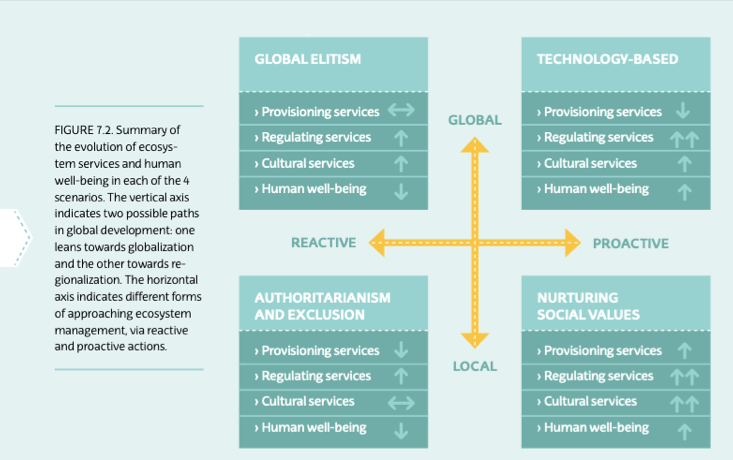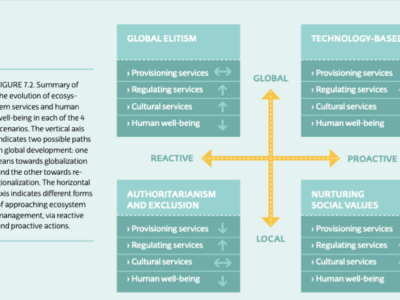We analyzed how ES and human well-being might change in a range of plausible futures and identified management strategies through a backcasting process. We aimed 1) to describe scenarios at local scale as a process and tool for landscape planning; 2) to provide more insights on how large-scale scenario developments can be translated to the local level. Afterwards, to establish the plausibility and coherency of the recently constructed Biscay participatory scenarios, and to analyze policy options for improving sustainability of land use and the supply of ecosystem services, a spatially explicit analysis of land cover change was carried out.
“Probably the most important thing that stakeholders learned during the scenario-planning process was to see different perspectives and begin to understand different points of view … The desired future outcome focused on the common well-being, and therefore, common interests gained relevance. This broader view allowed participants to work on achieving shared solutions and to propose feasible, coherent, and commonly desired response options. Thus, this scenario-planning process, based on consensus building, enabled decision making that would be supported by society. This reinforcement was much appreciated by the policy makers involved in the EEMBiscay assessment, who make use of the results of the process to influence regional administration decision making. Therefore, this planning process is relevant for ecosystem management policies in the Basque Country.”
The scenarios were made in: 2010
The scenarios look out to: 2050

